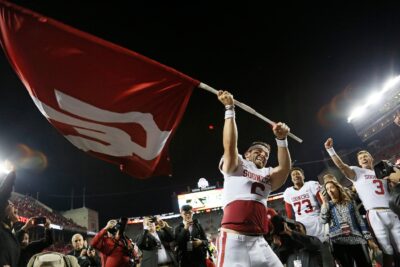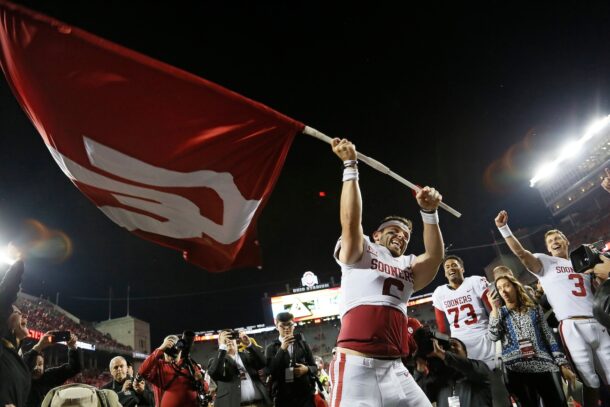Who are the top quarterbacks in SEC history?
We’ve spent the last several weeks flipping through team-specific media guides, glancing over highlight film and nearly coming to blows at our home office determining this 25-member comprehensive list of the league’s best defensive linemen.
Editor’s note: The SDS staff weighed multiple factors during our SEC’s all-time quarterback rankings process including career statistics, individual awards, importance to their respective team and the era in which they played.
20.) REX GROSSMAN, FLORIDA (2000-02)
The second of several Spurrier-coached signal callers in this list, Grossman unseated returning starter Jesse Palmer and five-star recruit Brock Berlin at quarterback as a redshirt freshman in 2000, leading the Gators to an SEC Championship with a 21-touchdown season.
It was Grossman’s sophomore campaign that turned heads however.
The winner of several awards including the SEC’s and AP’s National Player of the Year honor, the consensus All-American led the nation in passing efficiency, passing completion percentage and yards per attempt during an incredible 34-touchdown season. Grossman finished second to Nebraska Eric Crouch in one of the closest Heisman votes in history.
Following an 8-5 mark as a junior, Grossman departed for the NFL. He made 47 career starts over nine professional seasons and threw 63 touchdown passes.
Career numbers:
677-1,110, 9,164 yards, 77 TD, 36 INT
Individual superlatives:
Consensus All-American (2001); SEC Player of the Year (2001); AP National Player of the Year (2001); Heisman runner-up (2001)
NFL Draft:
No. 22 overall in 2003
19.) BABE PARILLI, KENTUCKY (1949-51)
One of the best players in Wildcats football history, Parilli directed Kentucky to a national championship in 1950 under Bear Bryant after finishing 11-1 with a win over then-No. 1 Oklahoma in the Sugar Bowl.
Nicknamed ‘gold finger’ for his expert holds on field goal tries, Parilli could spin it too, throwing for 50 touchdowns and 4,351 yards in three seasons. Parilli was named to the College Football Hall of Fame in 1982.
Parilli’s lone championship in the professional ranks came in 1968 when he was Joe Namath’s backup for the New York Jets in Super Bowl III. Namath’s ‘guarantee’ came to fruition as the Jets upset the Baltimore Colts, 16-7.
Career numbers:
331-592, 4,351 yards, 50 TD, 37 INT
Individual superlatives:
College Football Hall of Fame
NFL Draft:
No. 4 overall in 1952
18.) CHRIS LEAK, FLORIDA (2003-06)
North Carolina’s prep football passing leader in nearly every major statistical category, the Parade National Player of the Year enrolled at Florida as a five-star prospect in 2003 tasked with turning around the Gators under second-year coach Ron Zook following Steve Spurrier’s departure from Gainesville.
In 33 career starts at Florida, Leak fought through three offensive coordinator changes over a four-year stretch but still finished his career as the Gators’ all-time passing leader (11,213 yards) and tossed 88 touchdown passes, second-most in school history.
As a senior in 2006, Leak, with Tim Tebow’s help, led the Gators to their first SEC Championship in 10 years. A few weeks later, the season turned even sweeter when Florida defeated top-ranked Ohio State for the national title.
Career numbers:
895-1,458, 11,213 yards, 88 TD, 42 INT; 137 yards rushing, 13 TD
Individual superlatives:
Second-team All-SEC (2005-06); BCS Championship Game Off. MVP (2006)
NFL Draft:
Undrafted; played three years in CFL
17.) BERT JONES, LSU (1969-72)
LSU’s first quarterback to be named a consensus All-American in 1972, Jones didn’t earn the full-time starting gig until his senior season but finished fourth in Heisman voting and was voted national player of the year that fall.
Over 15 career starts, Jones won 12 games including several victories over nationally-ranked teams. According to records and various media reports, Jones’ numbers would’ve been considerably higher with the Tigers if he didn’t share snaps with Paul Lyons for disagreeing with coach Charlie McClendon’s handling of the offense.
Jones followed Johnny Unitas with the Baltimore Colts as the second overall pick in 1973 and over eight seasons as a starting quarterback, won three division titles and a most valuable player award.
Career numbers:
233-466, 3,390 yards, 28 TD, 17 INT; 9 TD rushing
Individual superlatives:
All-American (1972); National Player of the Year (1972)
NFL Draft:
No. 2 overall in 1973
16.) JOHN RAUCH, GEORGIA (1945-48)
Rauch, a four-year starter between the hedges, compiled a record of 36-8-1 and was a first team All-American as a senior in 1948. As a sophomore, Rauch led the Bulldogs to a sparking 11-0 record and the program’s third unclaimed national title (Williamson Poll No. 1).
He was college football’s first player to start four consecutive bowl games.
Rauch left Georgia as the Bulldogs’ all-time leading passer (just over 4,000 yards). He played three seasons of pro ball before beginning an incredible coaching career spanning from 1952-76 that included stops in the SEC, AFL and NFL.
Career numbers:
N/A
Individual superlatives:
All-American (1948); SEC Player of the Year (1948); Florida-Georgia Hall of Fame; Georgia Circle of Honor; College Football Hall of Fame
NFL Draft:
No. 2 overall in 1949







